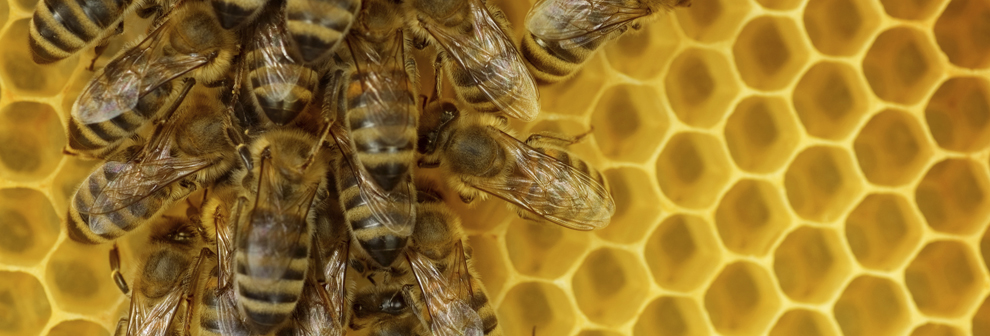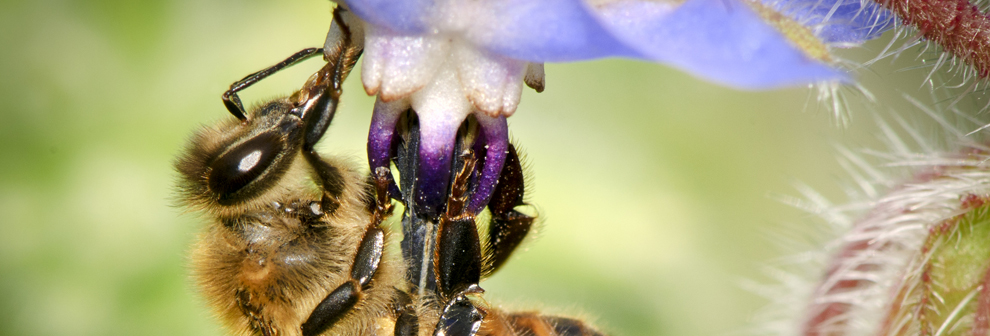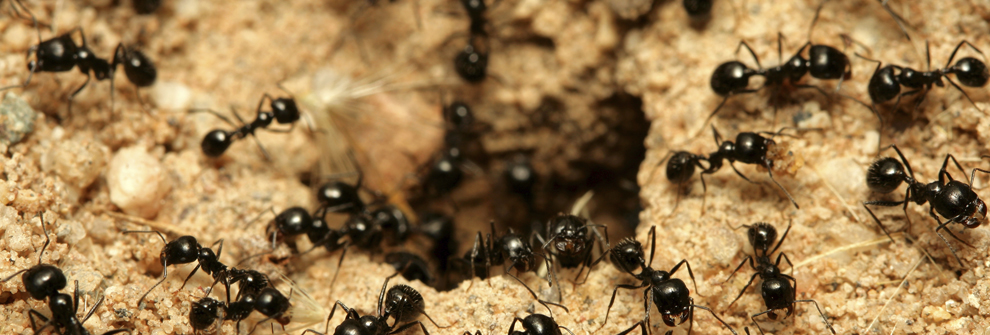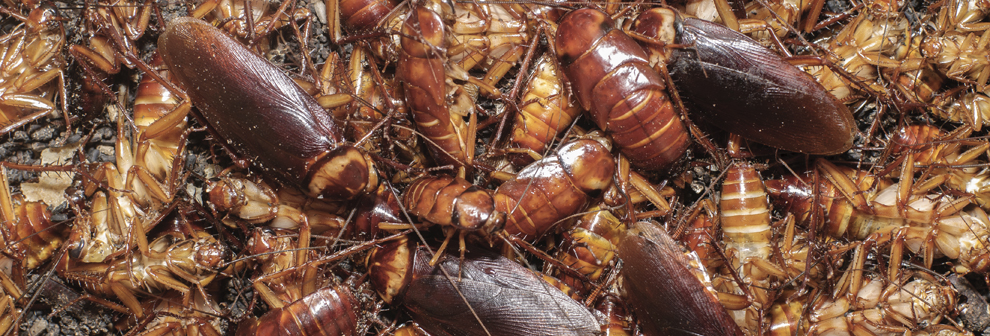Identification of Honey Bee or Apis Mellifera
The honeybee is not a native to the United States. It was introduced during colonial times. Honeybees are highly social insects and communicate with each other, relaying direction and distance of nectar and pollen sources. Bees construct wax combs placed side by side that provide a space to rear young and store honey. Bees are very hard working creatures with a very rigid social order.
The bee colony lives on the stored honey throughout the winter; therefore, the bees can live for years. Colonies kept by beekeepers yield an average of 50lbs of honey. Unlike other bees, honeybees do not hibernate during cold weather. It is known that honeybees have been kept by humans for thousands of years. Honey was found in the tombs of Egyptian pharaohs, after 2,000 years it was still edible!
When colony populations are high, the queen may move the colony to a new nesting site. Bees swarm at this time, usually during the spring months. When bees swarm it is not uncommon to find a large mass of honeybees in a bush or on tree branches. These relocating honeybees usually find hollow trees to begin their new colony, but they occasionally find their way into building wall voids.
Damage They Cause
Honey bee Removal is important as they make their colony in a building wall can become a major problem. The bees can chew through the wall and end up inside. The storage of large amounts of honey attracts other bees, wasps, roaches and other insects. Stored honey can absorb moisture and ferment or overheat without adult bees to tend it, causing strong odors. Their waste buildup, dead bees, shed larval skins, wax caps from combs and other material, attracts carpet beetles and moths.
Honey Bee Removal & Control, Georgia
When a honeybee colony is found in a building wall, it must be removed. There are fundamental differences between the bee keeper and the pest control operator in how they go about removing honeycomb and nest. Bee keepers plan to relocate the colony by attempting to find the queen and brood comb. Of course, a pest control operator will use a chemical method to kill the bees then remove the comb. Some beekeepers will tell you that killing the colony is wrong, that the bees should be relocated. While this may be true in some instances, each situation is unique and both options must be weighed before coming up with a plan of extraction.
The Georgia Department of Agriculture requires that anybody attempting to remove a beehive from a structure must be a registered pest control operator, a beekeeper without this pest control license is violating Georgia law. The government has implemented this law because many homeowners were hiring beekeepers with no construction background to remove bee colonies. The beekeepers would remove only a portion of the colony and leave the homeowner with an active bee problem and a damaged home. Not all beekeepers were doing this but enough of them were causing issues for homeowners, this caused the state to step in and begin requiring licensing for honeybee removal from structures.
Certain exterminators will not kill honey bees because they believe the bees are on the endangered species list. Honey bees are not on the endangered species list and it is not illegal to kill them. European honeybees are actually considered non-indigenous to the U.S. and treatment is legal as long as the product used is labeled for honeybees.
Killing the colony can be accomplished in the same way as killing yellow jackets in a wall void is done. The location of the nest in the wall and the entry point into the wall must be identified to assure that the entire colony is treated. Treating the colony is especially important when removing the comb from inside the home. Sometimes the comb is in a floor or ceiling and can not be removed any other way.
One reason a colony would be destroyed rather than relocated would be a weaker colony infested with wax moths or other pests. If it is determined that killing the colony is required, after the colony is dead the nest must be removed. If the nest is not removed, the wax combs will melt and allow honey to flow down through the walls. Honey stain can never be removed; the walls will have to be replaced. Additionally, the exposed honey attracts other bees, wasps, insects and animals. The comb wax will attract wax moths that may persist for several years. After the colony is killed or removed the entrance should be sealed properly to prevent future problems.
If it is determined that the colony can be saved the comb and as many bees as possible will be removed in a similar way. Smoke from a smoker will usually be used to trigger a feeding instinct in the bees. Once the bees gorge themselves with honey they can no longer sting. As the comb is extracted from the home it will be placed inside super frames and tied into place. After the removal is complete the area will be treated to prevent any new colony from building a hive.
Removing honey bee nests from wall cavities is a time-consuming, labor-intensive practice that should only be performed by a professional bee exterminator. If you are experiencing a problem with honey bees in the greater Atlanta area feel free to contact Urban Wildlife Control for help. If you have found a swarm of honeybees that looks like a large mass of bees we may remove these bees for free, depending on variables, as Urban Wildlife Control does keep bees for honey and pollination purposes.




